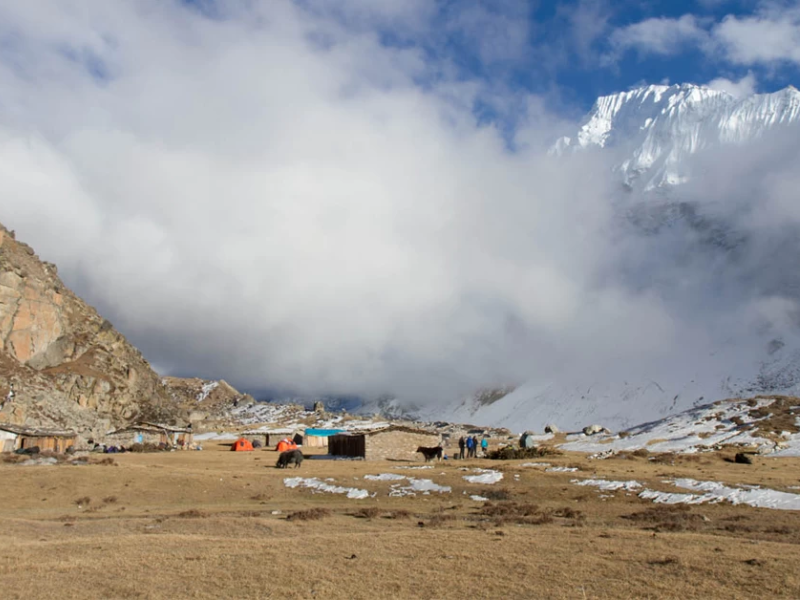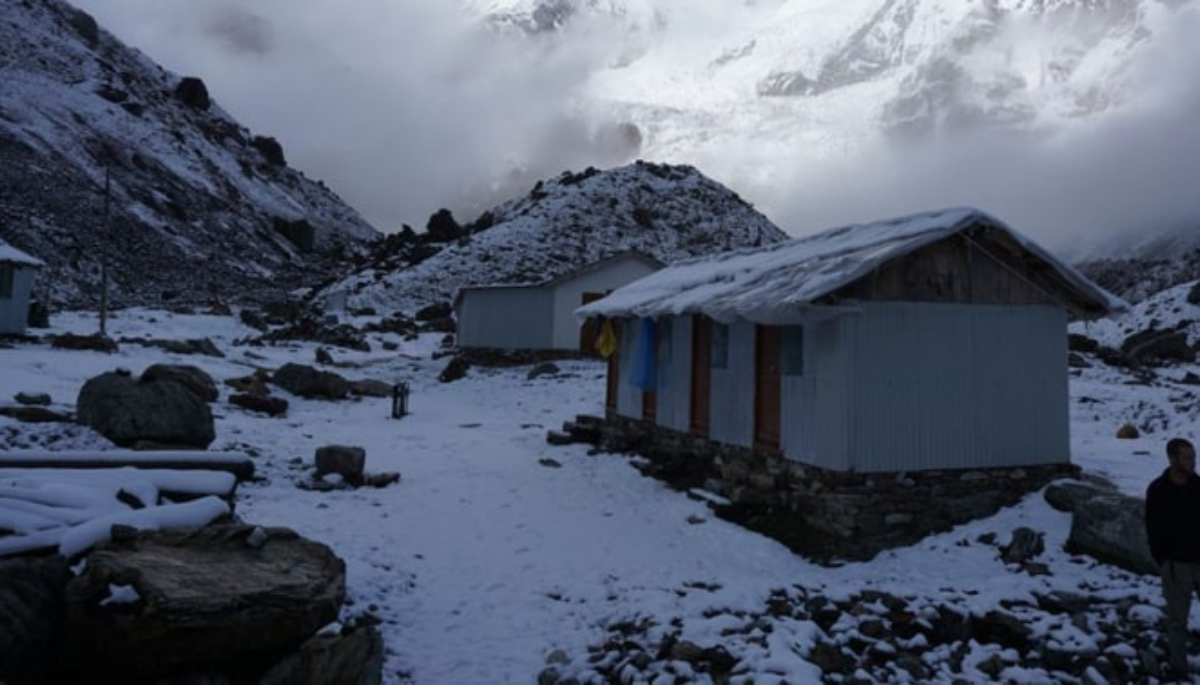The Lumba Sumba Pass trek is the last enchanting trekking venture of Nepal. Being positioned in the wilderness amid Kanchenjunga and Makalu, it is thus a trek for the true adventure seeker. When trekking here, you get a rare and lovely offbeat opportunity to walk through alpine landscapes, indigenous villages, and dense forests rich with wildlife.
In this guide, we explore the highlights, itinerary, best seasons, permits, and some useful tips to squeeze the best out of your Lumba Sumba Pass Trek.
Why choose the Lumba Sumba Pass Trek?
The Lumba Sumba Pass Trek holds its own among Nepal’s classic routes. The trekkers, used to Everest or Annapurna trails with all their hustle and bustle, may find a little seclusion here. It connects the Kanchenjunga Conservation Area with Makalu Barun National Park with a highly dramatic mix of nature and culture.
Highlights:
- Untouched Wilderness: Be free from the tourists and bask in authentic Himalayan solitude.
- High Pass Adventure: Wander across the remotest of high passes by the name of Lumba Sumba Pass at 5,177 meters.
- Majestic Peaks: Mavericks show you a line-up of Everest, Kanchenjunga, Makalu, and others on a clear day.
- Cultural Diversity: Visit the world’s one culture – Rai, Sherpa, Limbu, and Tibetan.
- Wildlife Sightings: Have a chance to see red pandas, snow leopards, and other wild species.

Lumba Sumba Pass Trek Itinerary
I. Days 1–2: Arrival and Journey to the Trailhead
- Day 1: Arrival in Kathmandu (1,350 m)
Welcome to Nepal! You will be courteously transferred to a hotel. There will be a welcome dinner in the evening, along with a trek briefing. - Day 2: Fly to Phaplu (2,413 m) and trek to Salleri (2,390 m)
Enjoy a stunning flight to Phaplu and then trek from there to the district headquarters, Salleri. Visit local markets and Sherpa villages.
II. Days 3–4: Into the Hills and Monasteries
- Day 3: Salleri to Ringmo (2,720 meters)
The trail ascends through terraced fields and pine forests. Visit the Thupten Chholing Monastery, a spiritual refuge for Tibetan refugees. - Day 4: Ringmo to Sarsar Beni (3,300m)
Ascend through rhododendron forests to yak pastures—a tranquil day of watching photographic views of Numbur and Karyolung peaks.
III. Days 5–6: The High Pass Adventure
- Day 5: Sarsar Beni to Lumbha Samba Phedi (4,200 m)
Continue the steep climb to the upper base of the pass… trekking above the tree line into alpine terrain. - Day 6: Cross Lumbha Samba Pass (4,300m to Kharka (3,980m)
This is the most fun day, an early start to crossing the pass. Panoramic views of Everest, Lhotse, and Makalu greet you there. Descend to Kharka.
IV. Days 7–8: Descent Through Mountain Villages
- Day 7: Kharka to Thaksindo (2,931m)
Descend into lush valleys, wary of a wonderful monastery and breathtaking mountain views. - Day 8: Thaksindo to Taksindu La—Trek to Nunthala (2,220m)
Cross Taksindu La Pass and hike down to Nunthala, a cozy village nestled in green hills.
V. Days 9–11: Join the Classic Everest Trail
- Day 9: Nunthala to Bupsa (2,360 m)
All mixed up and down through terraced fields, suspension bridges, and agreeable Rai villages. - Day 10: Bupsa to Surke (2,290 m)
The classic Everest trail is already quite busy with trekkers heading for Lukla and Namche. - Day 11: Surke to Lukla (2,840m)
A short but very pleasant walk to Lukla, where it is time to relax and celebrate this successful trek.
VI. Days 12–14: Return and Farewell
- Day 12: Flight to Kathmandu
Early morning flight back to the capital city. Free time for any last-minute shopping or spa treatments. - Day 13: At leisure in Kathmandu
The optional sightseeing of UNESCO World Heritage sites or free time is offered. - Day 14: Departure
Transfer to the airport for your flight onward.
Each stretch, as you can see, balances cultural interaction and natural beauty.
Best Times to Trek the Lumba Sumba Pass
Planning your trip during spring (March-May) or autumn (September-November) makes for the best trekking experience. The weather is usually clear, and mountain views are at their best.
And on the other hand, during monsoon, there are heavy rains, while in winter, passes are very dangerous. Hence, timing becomes everything about safety and experience.
Required Permits for Lumba Sumba Pass Trek
As the route crosses through restricted zones, certain permits need to be obtained:
- Restricted Area Permit
- Kanchenjunga Conservation Area Permit (KCAP)
- Makalu Barun National Park Permit
You will also need to be part of a trek pre-booked with a licensed trekking agency and be accompanied by a registered guide, ensuring your safety and lawful access to the area.

Difficulty and Preparation for the Trek
This is definitely a hard trek. Given the remote nature and altitude, the Lumba Sumba Pass Trek is best suited for very experienced hikers. However, with suitable training and preparation, it remains a once-in-a-lifetime experience.
How to Prepare:
- Start at least 2 months before departure with your training
- Incorporate cardio, weight training, and long-distance hikes into your workouts
- Acclimatize well during the trek, and keep yourself hydrated
Gear Essentials:
- A warm sleeping bag and a down jacket
- Waterproof boots and lightweight, layered clothes
- Trekking poles, a headlamp, and a small first-aid kit
- Energy food, purifying tablets for water, and an extra charger for phones
Local Customs and Responsible Trekking
The villages along the Lumba Sumba Pass Trek are a hotchpotch of Buddhist and animist traditions. Respect goes a long way. Ask permission before taking pictures, do not carry plastic, and patronize the local teahouses when possible.
By employing local guides and porters, not only will you get a deeper understanding of the region, but the money will also directly trickle down into the pockets of remote Himalayan communities.
Final Thoughts
The Lumba Sumba Pass Trek certainly transcends a mere hiking excursion: it is a full-on tour into some vestiges of the wild hotel in the Himalayas. If you are after a remote, culturally enriching, and strenuous trek, this should be at the top of your wish list.
What this hike ultimately offers is a treasure trove: to walk between two 8,000-meter giants while living at the pace of the hidden highlands of Nepal.
You May Also Read: https://nlrfnepal.org/the-best-jungle-lodges-in-nepal/


0 Comment